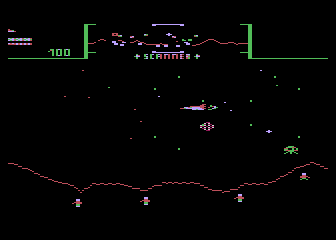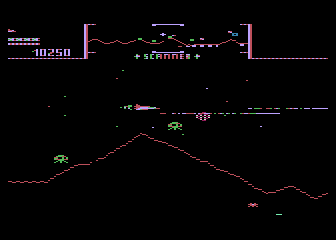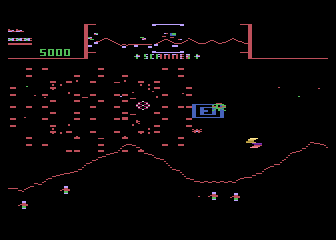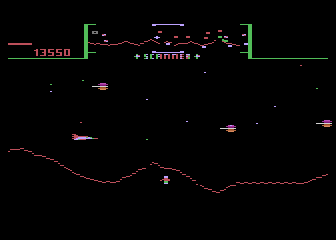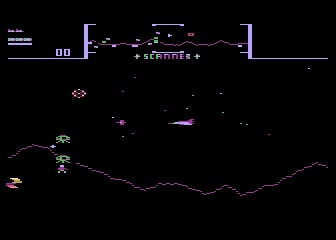|
|
Stargate
|
Name:
|
Stargate |
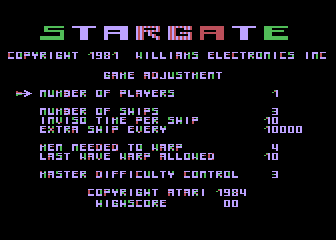 |
| Company: | Atari | |
|
Model #:
|
RX-8068 | |
|
Programmer:
|
Steve Baker | |
| Year: | 1984 | |
|
Released?
|
No
|
|
|
Notes:
|
Steve Baker programmed both Defender and its sequel Stargate for the 400/800 and 5200 |
Stargate was the 1982 sequel to Williams' smash arcade hit Defender. Stargate's name was changed to Defender II sometime after 1984 due to some kind of copyright problem. As with most sequels, Stargate didn't change the game formula that helped make the original game a hit. Instead Stargate expanded on the formula...
Stargate added a number of new features to the Defender formula including new enemies, new abilities, and of course stargates! Stargates allow players to instantly warp from one area of the level to another, which can be very handy if used right. Stargates can also be used to warp forward levels if certain amounts of humanoids are carried into them. The ability to score bonus points for carrying multiple humanoids is also a new feature first introduced in this game.
Other new abilities include the Inviso power, which is basically a super cloaking device. Using Inviso makes your ship invisible and allows it to pass through all enemies and their shots. However you can still shoot while "Inviso", so make the most your Inviso time. Stargate also includes the ability to enter Hyperspace. Entering Hyperspace is just as dangerous as it was in defender, and while it can save your life in an emergency it can also blow you to smithereens. Use the Hyperspace option sparingly!
Stargate is unique among Atari 8-bit games as it uses the original arcade title screen, including all the arcade colors, fonts, and options. Of course all of this wasn't by coincidence, programmer Steve Baker had an original Stargate arcade machine in his house so he could perfect the 8-bit version. According to Steve when he was done you could stand back 10 feet from the screens and not be able to tell the difference.
The options on the title screen allow the player to affect a whole range of game variables:
| Number of Players | Pretty self explanatory. This can be set to 1 or 2 players |
| Number of Ships | Another no brainer. This is the number of lives each player has. The value can be set from 1 to 9. |
| Inviso Time Per Ship | This option sets the amount of time your Inviso power lasts. The value can be set from 4 to 20. |
| Extra Ship Every | This option allows the player to set the frequency at which extra lives are awarded. This value can be set from 1,000 to 50,000. |
| Men Needed To Warp | This option affects the number of humanoids the player needs to carry into a stargate to warp to the next level. This value can be set from 2 to 9. |
| Last Wave Warp Allowed | This option allows the player to set the last wave number in which the wave warp (mentioned above) can be used. This value can be set from 10 to 99 (hey you don't want to skip all the levels do ya?). |
| Master Control Difficulty | This option controls the overall difficulty of the game. The value can be set from 1 to 5. |
While Stargate may have beautiful graphics and an arcade accurate title screen, this version has major problems with slowdown. When too many enemies get on the screen at once (which is often) the gameplay becomes extremely choppy. According to Steve this is because Stargate used all the Atari 8-bit's processor due to the variety of graphical techniques used (Hi-Res, Bitmap, and Player Graphics).
Although Stargate never achieved the same level of success as its predecessor, it shows that even a great game like Defender has room for improvements. Much like the Atari 5200 version, the Atari 8-bit version of Stargate was never released. Atari may have been concerned about the choppy gameplay or the graphics mode used which makes text hard to read. What ever the reason, gamers missed out on a fun arcade conversion.

